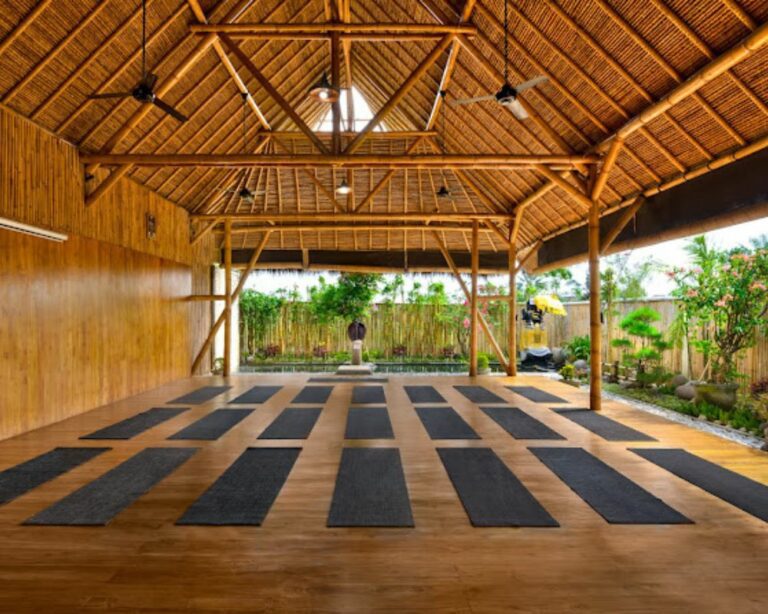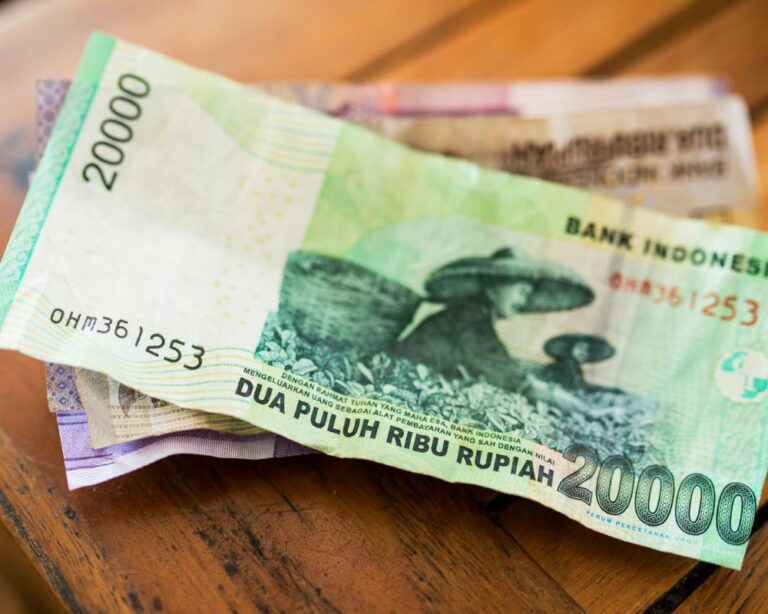Guide to Balinese Arak: things to know before drinking Bali Arak
Here’s your guide to the island’s most favored alcohol, Bali Arak, its traditional spirit. Explore its rich history, cultural significance, and safety tips before taking the shot of Balinese arak.
Welcome to my island! Today, I’m writing about the infamous Bali Arak, which I learned to love while living here in Bali. If you are on the island for a while, you will come across this traditional Balinese drink.
Made from fermented rice or palm sap,Bali Arak’s taste can be more varied, ranging from slightly sweet to savory or even fruity, depending on the specific ingredients and fermentation process used.
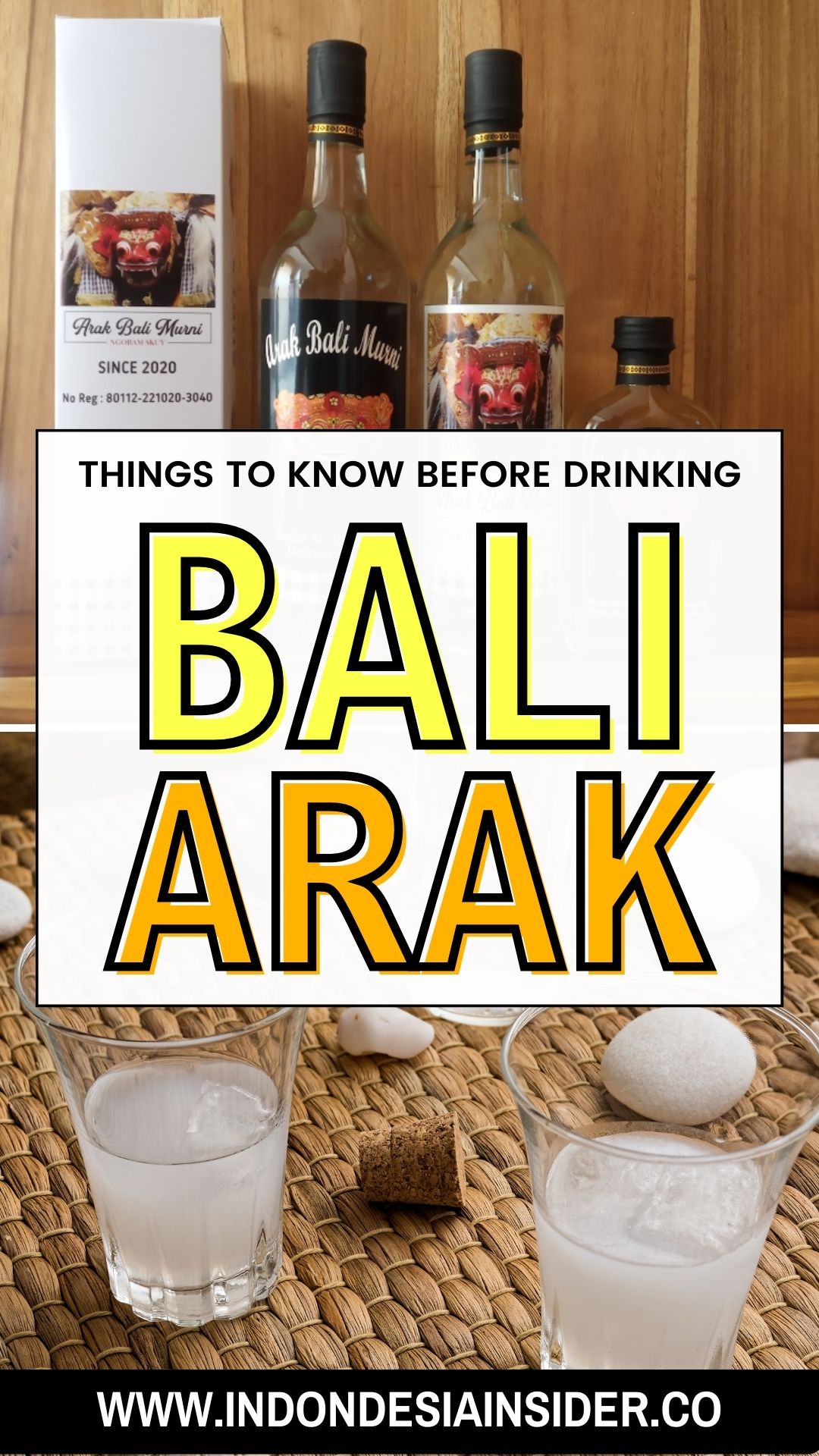
The flavor of Balinese Arak can also be influenced by the addition of local fruits or herbs during the distillation process, adding unique notes to the final product.
Compared to other cities in Indonesia, it is not challenging to purchase alcoholic beverages in Bali; alcoholic drinks are widely available on the island, whether in convenience stores, groceries, or even the local warungs.
But before trying it, here’s what you need to know about this famous drink in Bali.
🙋 What is Arak from Bali?
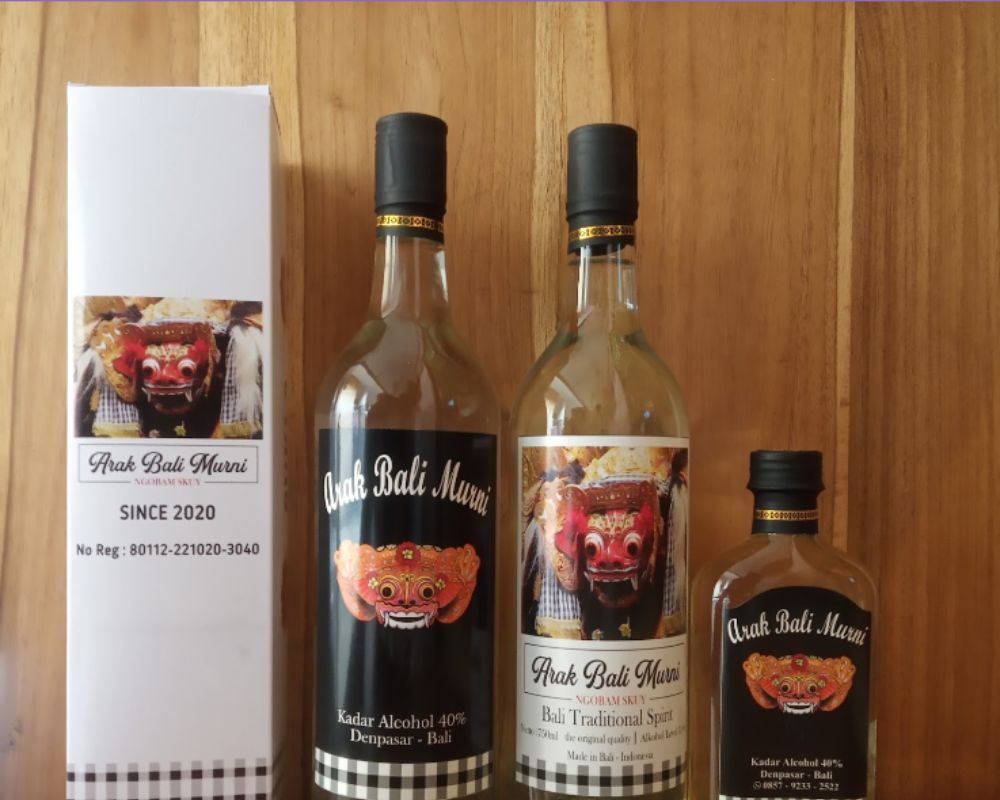
Balinese Arak is a traditional spirit from Bali, Indonesia, known for its potent taste and cultural significance. It is distilled from fermented rice or palm sap, and the process can include natural ingredients like fruits for flavor enhancement.
Arak plays a central role in social ceremonies and rituals in Balinese culture, symbolizing hospitality and community bonds. The spirit varies in strength and quality, often homemade, which can lead to variability in taste and alcohol content.
It’s enjoyed neat, with mixers, or in cocktails, offering a unique taste that reflects the rich traditions and natural bounty of Bali.
Bali Arak is a well-known, long-lasting, locally produced alcoholic beverage produced primarily in Bali’s Karangasem region. It has been around for hundreds of years and is a popular alcoholic drink in Bali.
Balinese drink Arak for various reasons, including warming their body up, medicine, religious rites, and socializing.
🏺 History of Bali Arak
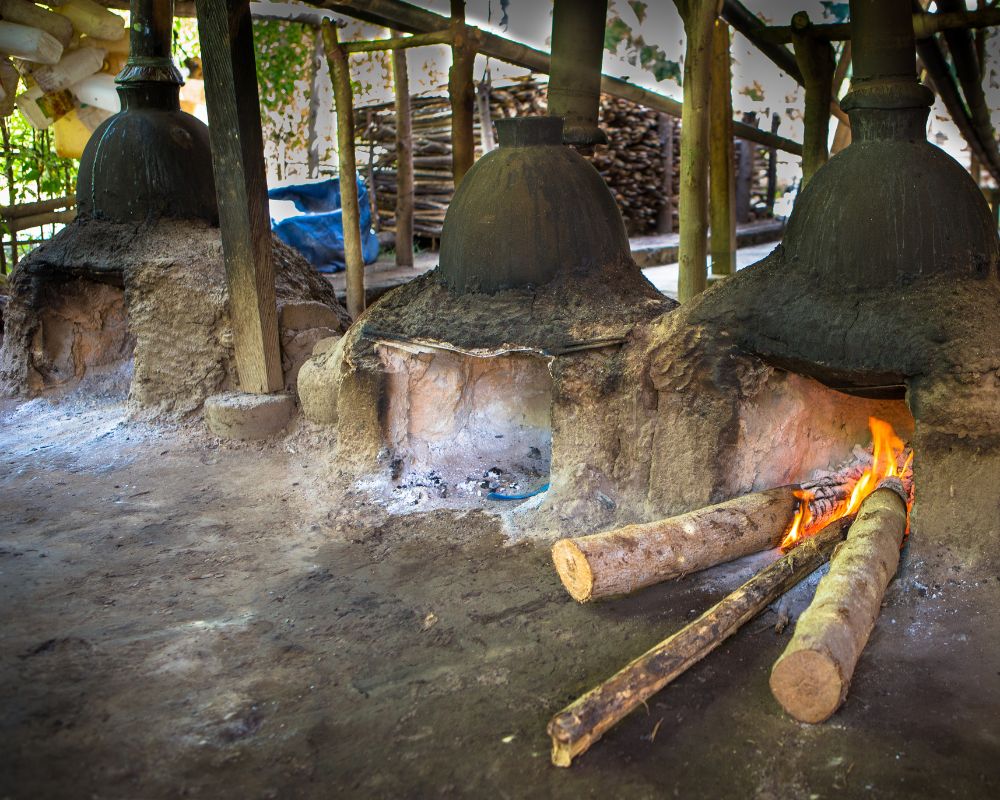
Bali Arak’s history is deeply entwined with the cultural and spiritual fabric of Bali, dating back centuries. Originally, it was produced and consumed for religious ceremonies, believed to purify and connect the physical world with the spiritual.
The distillation process, passed down through generations, involves fermenting rice or palm sap and then distilling the liquid in a traditional still, often adding local fruits to enhance flavor. This method has not only made Arak a staple in Balinese rituals but also a symbol of hospitality and communal harmony.
Throughout its history, Arak has seen both reverence and controversy, notably due to incidents of methanol poisoning from improperly distilled batches.
However, these challenges have led to stricter regulations and a resurgence in interest for authentic, safely produced Arak, emphasizing its heritage.
Today, Balinese Arak is celebrated as part of Bali’s rich cultural tapestry, enjoying popularity among locals and tourists alike, and is recognized for its unique character and traditional production methods.
In Bali, Arak is essential to social and artistic life that originated from the Majapahit dynasty (1293–1527) and is a tradition among Balinese people.
The Mongol invasion of Java brought Arak and shared the knowledge of how to distill it. Most Indonesians follow Islam, less than 2% follow Hinduism, and most of those live in Bali. In Islamic law, drinking alcohol is against the religion, and Arak is mostly only made and drank in Bali.
🥃 What kind of alcohol is arak?
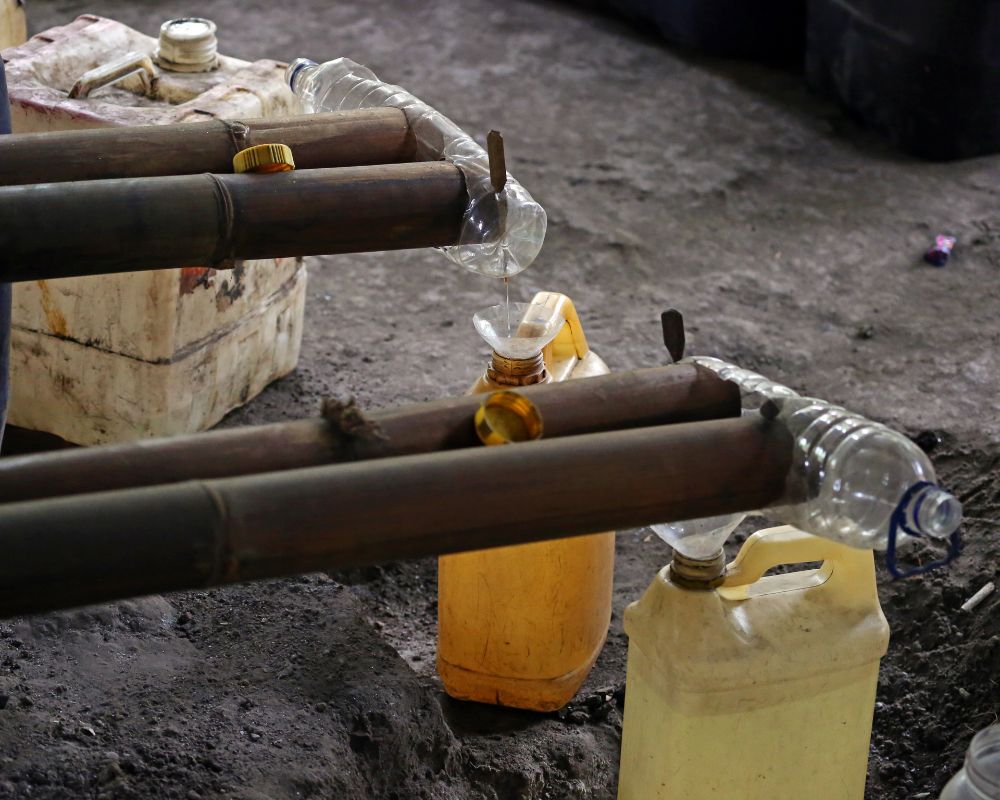
Arak is a traditional distilled spirit, commonly found in various regions across the Middle East and parts of Asia, including Indonesia, Lebanon, and Iraq.
The type and characteristics of Arak can vary significantly depending on the region of production. Here’s a brief overview of the different kinds of Arak based on their regions:
| Middle Eastern Arak | Balinese Arak | |
| Region | Popular in countries like Lebanon, Syria, and Iraq | Specifically in Indonesia, particularly on the island of Bali |
| Base ingredient | Made primarily from grapes, though sometimes figs or dates may be used, fermented then distilled with aniseed, which gives it a distinctive licorice flavor | Produced from fermented rice or palm sap, without the aniseed that characterizes Middle Eastern Arak |
| Consumption | Typically served with water and ice, turning it a milky-white color due to the anise oil emulsifying with water, a process known as louching | Consumed neat, with mixers, or in traditional and modern cocktails |
| Alcohol Content | Generally ranges between 40% to 60% ABV | Varies widely, from about 20% to over 50% ABV, depending on the production methods |
Both types are distilled, but the distillation process and the ingredients significantly affect the flavor profile and the final product. Arak holds cultural significance in its respective regions, often consumed during social gatherings, religious ceremonies, and celebrations.
Despite sharing the same name, Middle Eastern Arak and Indonesian Arak are quite different spirits, distinguished mainly by their base ingredients and flavor profiles.
The use of aniseed is a key differentiator for Middle Eastern Arak, while Indonesian Arak’s profile is more dependent on the fermentation of rice or palm sap and does not typically include aniseed.
🥳 How strong is arak in Bali?
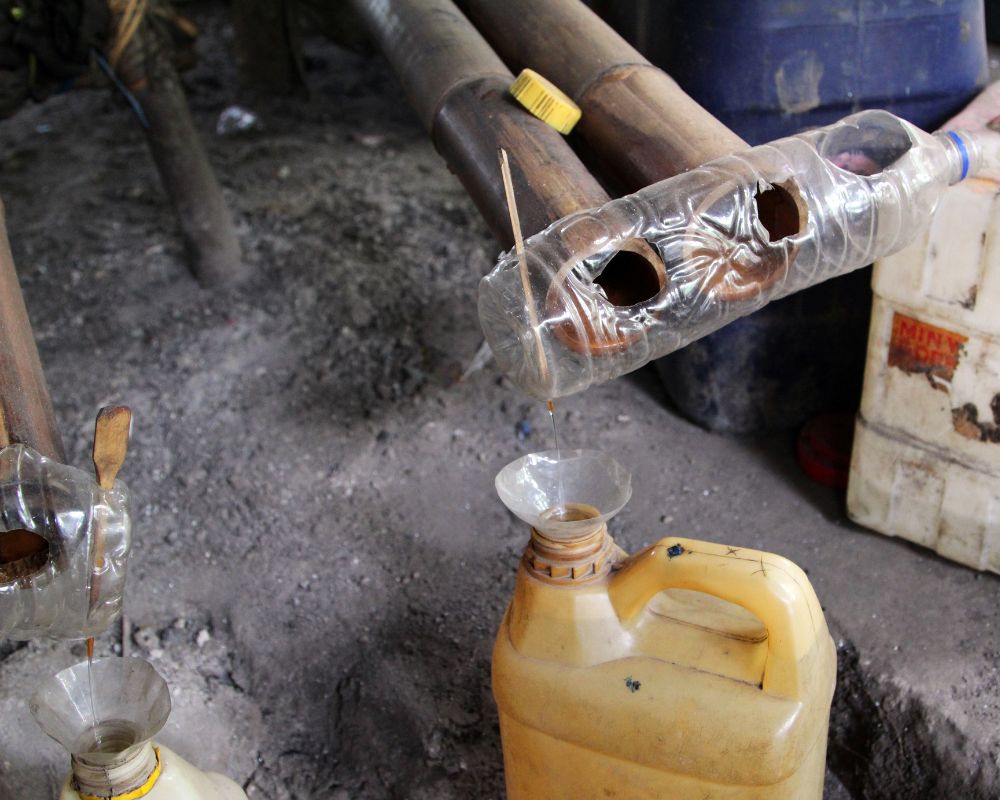
The strength of Arak in Bali, in terms of alcohol by volume (ABV), can vary significantly. Typically, Balinese Arak has an alcohol content ranging from about 20% to over 50%.
This wide range is due to the diverse methods of production, which can be artisanal or more standardized, and the degree to which the distilled spirit is diluted after production.
Homemade or locally produced Arak, common throughout Bali, often leans towards the higher end of this spectrum, sometimes even surpassing the 50% mark, especially if it hasn’t been diluted before sale.
Commercially produced Arak, which is more likely to adhere to standardized production processes, usually has a more consistent and sometimes lower alcohol content, which should be clearly labeled on the bottle.
Given the variability in strength, it’s crucial for consumers to be cautious, particularly with Arak purchased from local markets or roadside vendors, where the exact alcohol content might not be known.
✅ Is Arak legal in Bali?
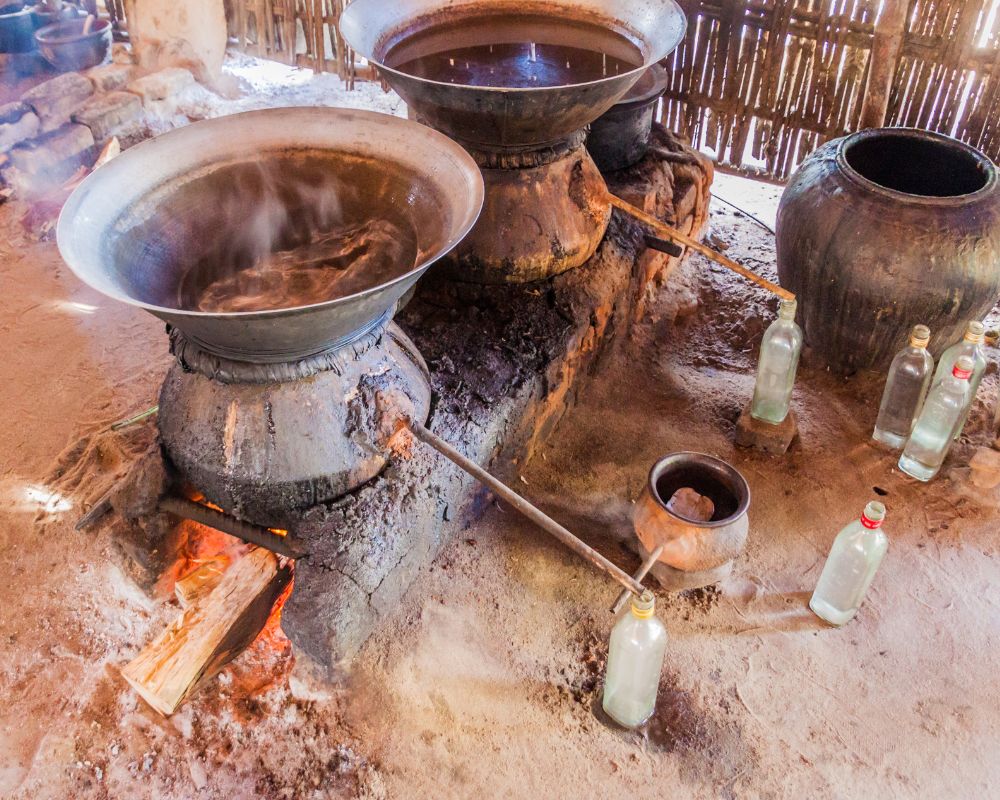
Yes, Arak is legal in Bali. However, its production, sale, and consumption are subject to Indonesian regulations. The government has implemented laws to ensure the safety and quality of Arak, especially after incidents involving methanol poisoning from unregulated production.
Licensed producers are allowed to legally manufacture and sell Arak, and there are efforts to promote safer production practices among traditional home producers.
For consumers, it’s important to purchase Arak from reputable sources to ensure its safety and authenticity. The legal status of Arak, coupled with efforts to safeguard its production, reflects its cultural importance and the desire to preserve this traditional Balinese spirit for future generations.
In January 2020, the Governor of Bali signed a law that made local alcohol legal. It was then named one of the Intangible Cultural Heritage of Indonesia by the Ministry of Education, Culture, Research, and Technology of Indonesia in 2021.
Bali Arak was also picked as a souvenir for people attending the G20 Bali Summit in 2022.
📍 Where can I buy Bali Arak?
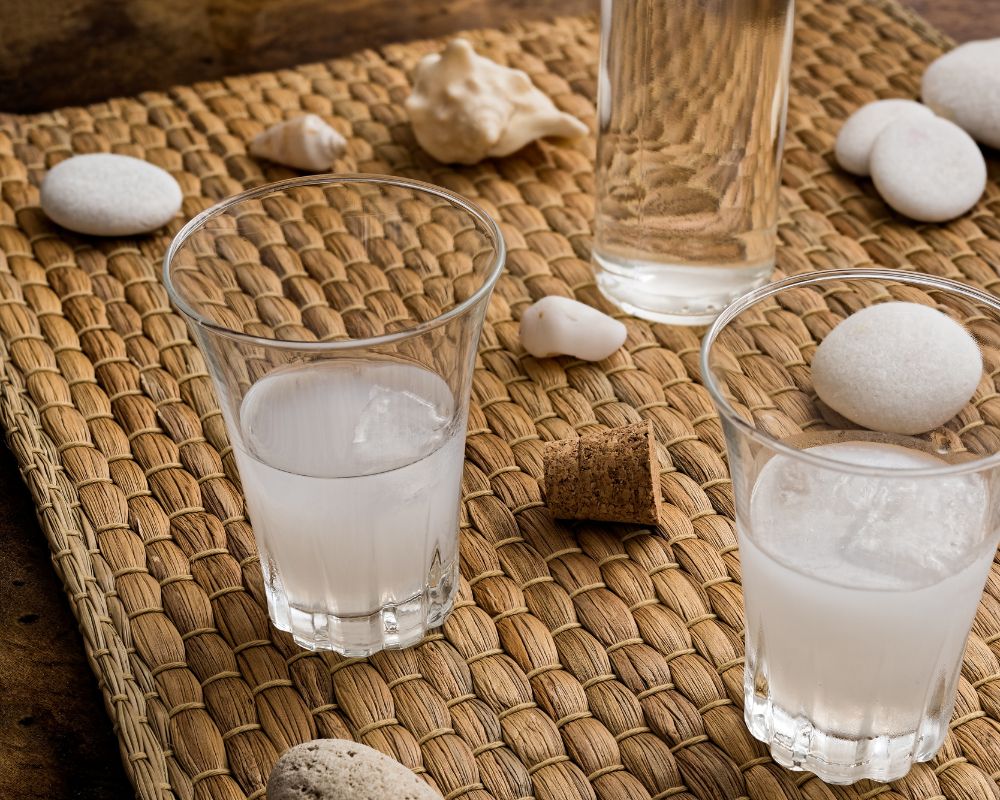
Bali Arak is widely available around the island. If you’re looking for authentic and safe options, you can buy from groceries, wine shops, and Indomaret. Most restaurants and warung in Bali also offer Arak in their drink list.
Traditional markets and local liquor shops in Bali often sell Arak. These are great places to find a variety of Arak produced by local artisans. Ensure you buy from reputable vendors to avoid the risk of improperly distilled Arak.
Some specialized liquor stores in Indonesia and abroad may carry Bali Arak, especially those that specialize in international or artisan spirits.
There are online platforms and retailers that specialize in selling traditional spirits, including Bali Arak. Purchasing from a reputable online store can ensure you’re getting a quality product, and they might provide shipping to your location.
Some distilleries in Bali offer tours and have their own shops where you can purchase their products directly. This is also a great way to learn more about the production process and ensure you’re buying authentic Arak.
While not a place to buy a bottle to take home, many bars and restaurants in Bali serve Arak-based cocktails, offering a way to experience the spirit in a more controlled setting.
Always ensure that you’re purchasing from a reputable source to avoid the health risks associated with improperly produced Balinese Arak.
You can bring Bali Arak home as long as you adhere to the alcohol import regulations of your home country and the export regulations of Indonesia. Here are some general guidelines to consider:
- Check Import Limits: Most countries have specific limits on the amount of alcohol you can bring back without declaring it or paying duty. This limit varies by country, so it’s important to check the regulations of your destination country before traveling.
- Declaration: If you’re bringing back more than the allowed limit, you may need to declare the alcohol at customs and potentially pay any applicable duties and taxes.
- Packaging: Ensure that the Arak is properly packaged to prevent breakage during your journey. Airline regulations typically require alcohol to be packed in checked luggage due to its alcohol content. The packaging should be secure to avoid leakage.
- Legal Age: You must be of legal drinking age in both Indonesia and the destination country to bring Arak or any alcoholic beverage across borders.
- Regulations on Alcohol Strength: Some countries have restrictions on importing alcohol over a certain percentage of alcohol by volume (ABV). Check if there are any such restrictions for your country.
💰 How much is Bali Arak?
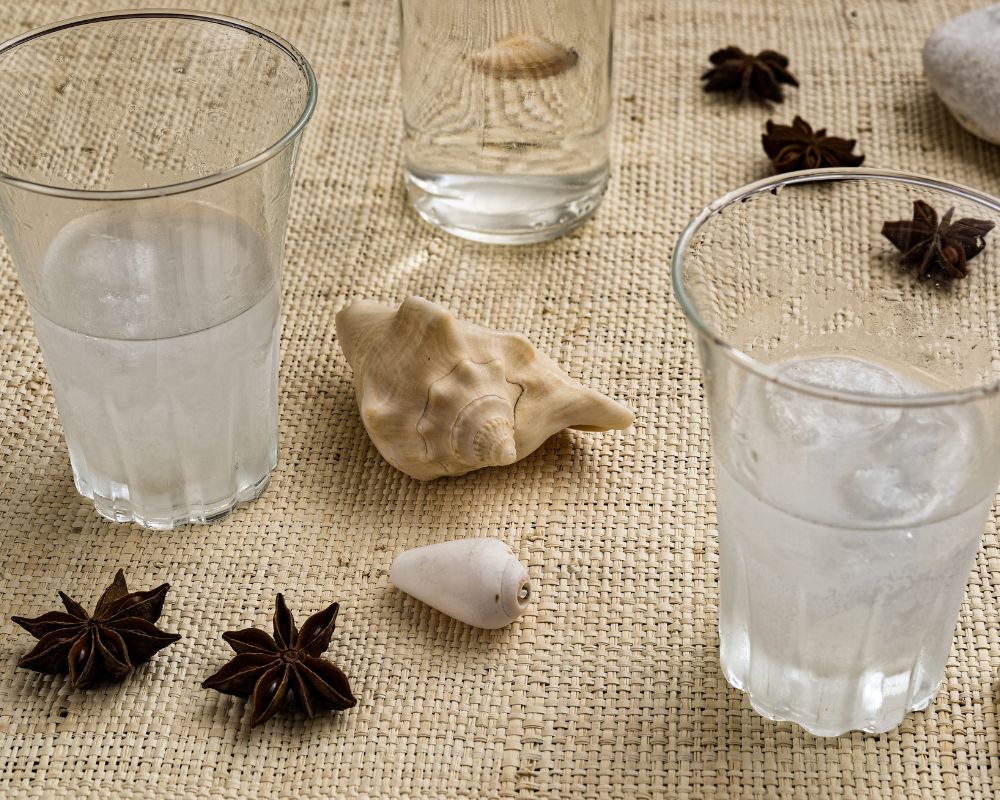
The quality of Arak also plays a significant role; premium or more refined versions will naturally command a higher price. Established bars and restaurants charge more when considering venues than local markets.
A 700ml bottle of Arak in a local market could cost between $5 to 10 USD. While a good quality high-end Arak can cost from $44 or $220 USD.
🏆 What is the best Balinese Arak?
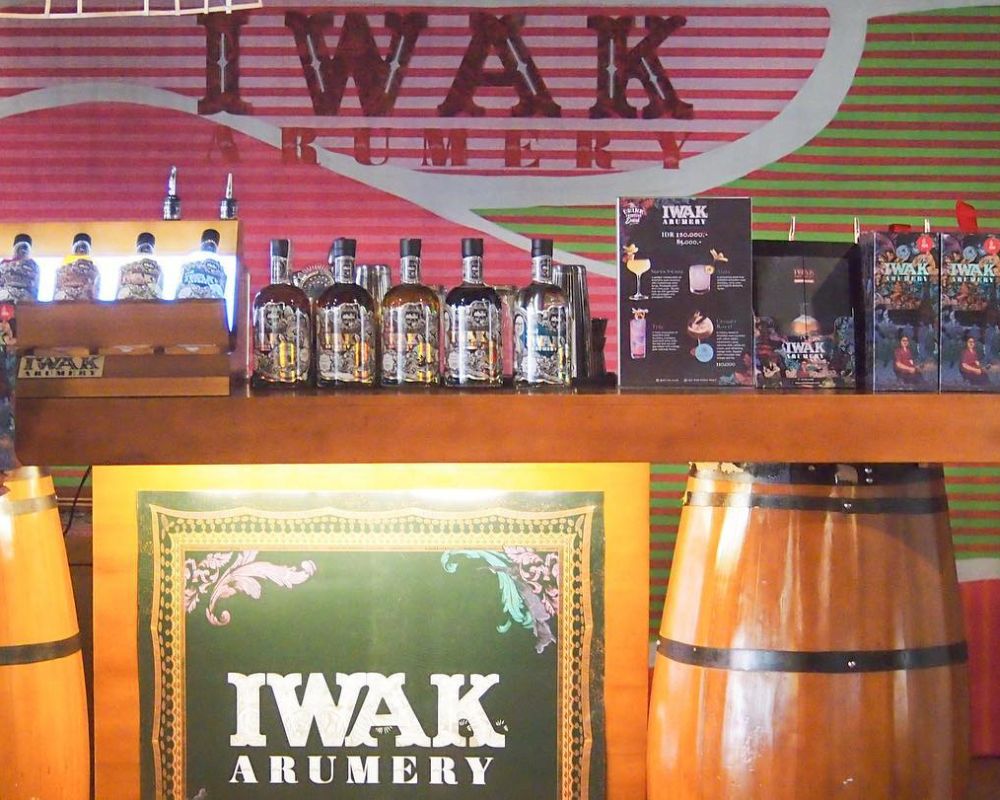
Identifying the “best” Balinese Arak can be subjective, as it often depends on personal taste preferences and the specific qualities one values in a spirit.
However, there are several highly regarded Arak brands and types in Bali known for their quality, traditional production methods, and unique characteristics. Here are a few noteworthy mentions:
- Iwak Arumery is the best Arak in the market. Their blend of the Arak flavors that sell compares to the high-end liquors you’ll get overseas. Each taste of the Arak they offer was steep, with local fruits and spices fermented through the years. Although the price is quite expensive compared to other Arak in the market, the taste of hearty liquor is one of a kind.
- Arak Bali Dewi Sri: This is one of the most reputable brands in Bali, known for its quality and traditional distillation methods. Dewi Sri is a well-established producer of spirits in Indonesia, and their Arak is considered a premium choice.
- Arak Mas Ubud: Located in the cultural heart of Bali, Ubud, Arak Mas is praised for its artisanal approach to Arak production, emphasizing organic ingredients and traditional techniques.
- Arak Bali Baliana: This Arak is appreciated for its smoothness and the complexity of its flavors, produced by a family-owned distillery that values the craft of traditional Balinese Arak making.
🍹 How much alcohol percentage is in Bali Arak?
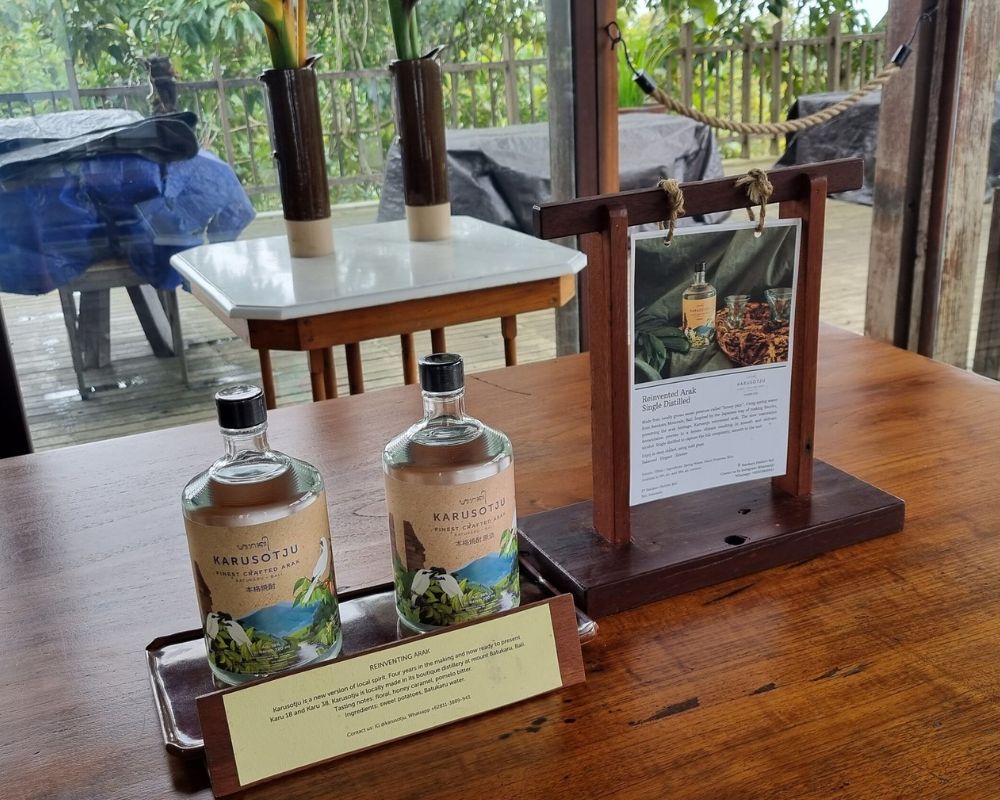
The alcohol content in Bali Arak can vary significantly, especially given the traditional and often artisanal methods of production. Typically, the alcohol by volume (ABV) of Bali Arak ranges from about 20% to over 50%.
The variation in alcohol content can be attributed to differences in distillation processes, the specific recipe used, and whether the Arak has been diluted after distillation.
Commercially produced Arak that adheres to standardized production practices tends to have a more consistent alcohol content, often labeled on the bottle.
However, homemade or locally produced Arak, which is common in Bali, may not always have precise labeling, and its strength can be much less predictable.
If you’re purchasing Arak in Bali, especially from a local market or a small-scale producer, it’s a good idea to inquire about the alcohol content and consume with caution if the exact percentage is unknown.
⛔ Is Bali Arak safe?
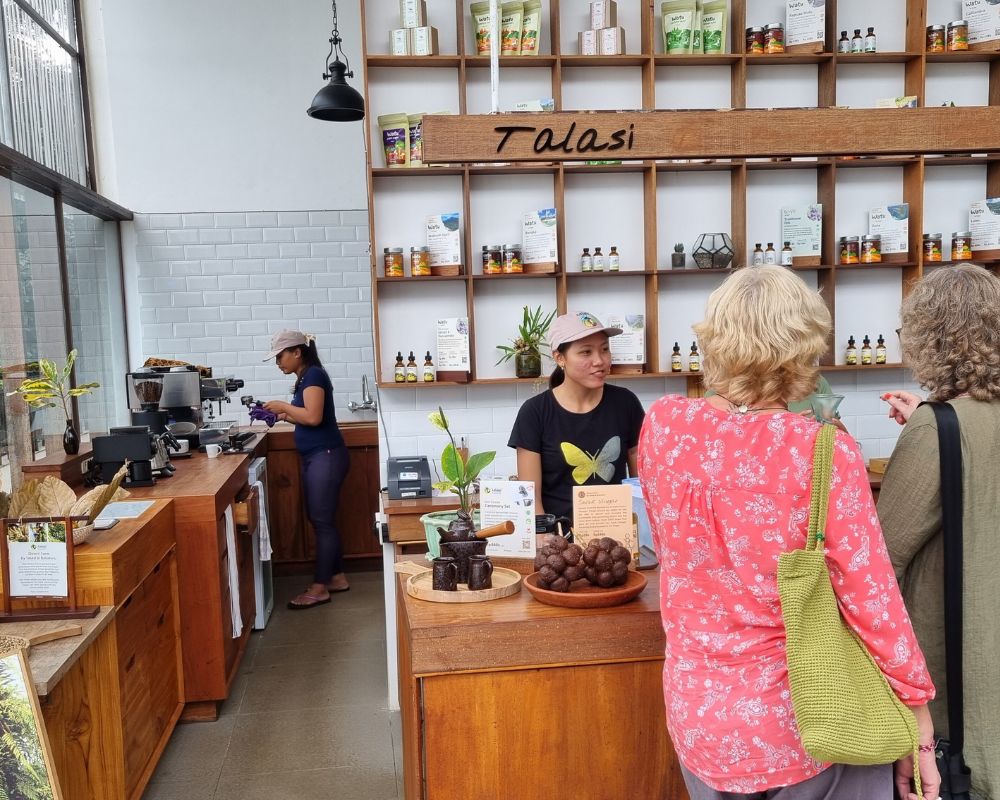
Generally, it is safe to drink most Bali Arak. Most who tried Arak noticed it smelled like gasoline. Your first shot of Arak may taste awful, but it gets done if mixed well with other sodas.
Some Balinese buy Arak on the black market; it’s served in plastic bags or recycled water bottles for about IDR 25,000, or $1.74 USD. Be extra cautious about where you are getting your Arak.
For that much, it’s a cheap night out. But if you talk about Arak with some people, they will quickly tell you all the bad things that can happen with it. For example, “It might make you go blind” or “It killed someone my friend knows” are two possible stories.
Bali Arak, which killed around 25 people in Bali a few years ago, made headlines. Unfortunately, the Arak they purchased was a controlled, taxed, and widely available brand. It’s not the type Balinese people often buy on the black market.
But this is a one-of-a-kind occurrence that will never be repeated. People have died or gone blind after drinking Arak. Methanol is highly hazardous and should not be confused with ethanol, another term for the sort of alcohol that causes intoxication.
The production of Arak includes a procedure in which the methanol is filtered, similar to how high-end alcohol ferments their product. Anyone who can create a drink will notice this time.
This is not limited to Arak; high-end vodkas and whiskeys also do it. Methanol is produced during fermentation and must be filtered before it is packaged and shipped to stores; similarly, Arak in Bali must be filtered.
But how do the Balinese drink arak?
🥂 How to drink Arak: the Balinese way
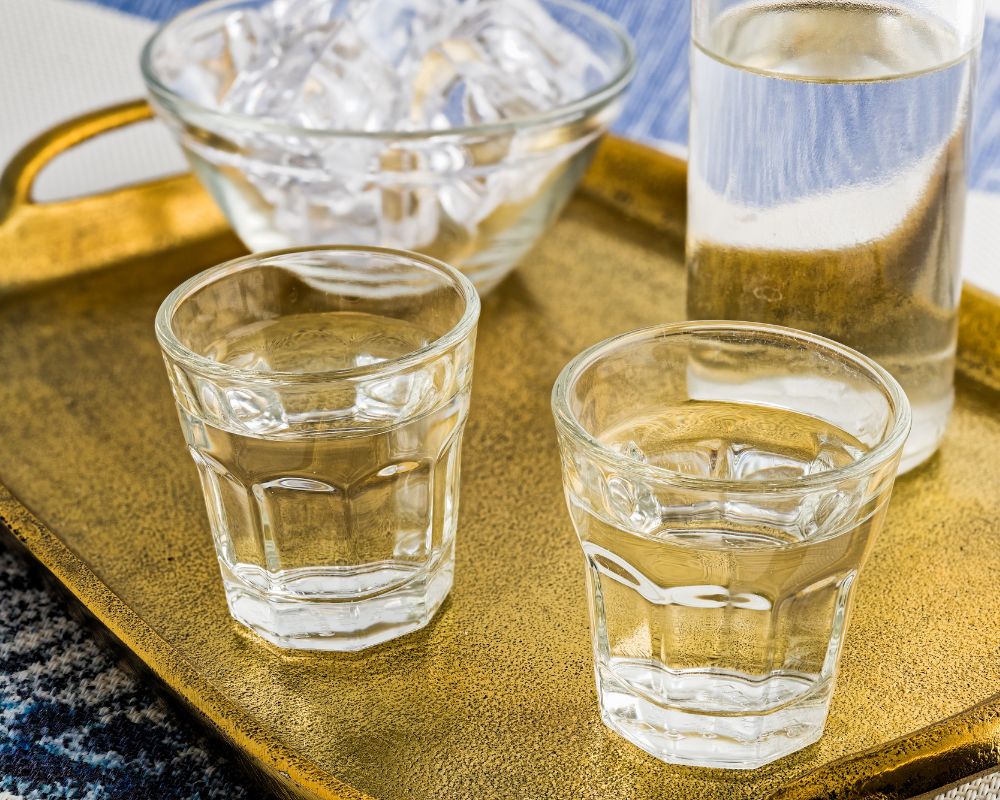
The older generation of Balinese drinks Arak without any other drink, neutralizing the alcohol. Most younger Balinese generations drink Arak with a mixer, usually Coca-Cola or juice.
The locals don’t drink Arak by a shot glass but use a single plastic water cup to serve the drink. Another way they drink is by mixing Arak and Coke in a big bottle.
The host or the person who opened the bottle generally serves everyone a shot of Arak. They have to drink quickly, hand the cup back to Arak to pour another, and give it to the next person.
After everyone got their shit, the host or whoever opened the arak bottle usually served himself last. In most restaurants that serve younger generations, their Arak is served mixed with various juice and soda flavors like a cocktail but served in bottles.
Unwritten rules drinking with Balinese, that if you get the cup passed or served, you must drink it, even if you are already drunk. We think you should try drinking Arak like a local at least once if you haven’t already.
🆚 How do you know the difference between good and bad Arak?
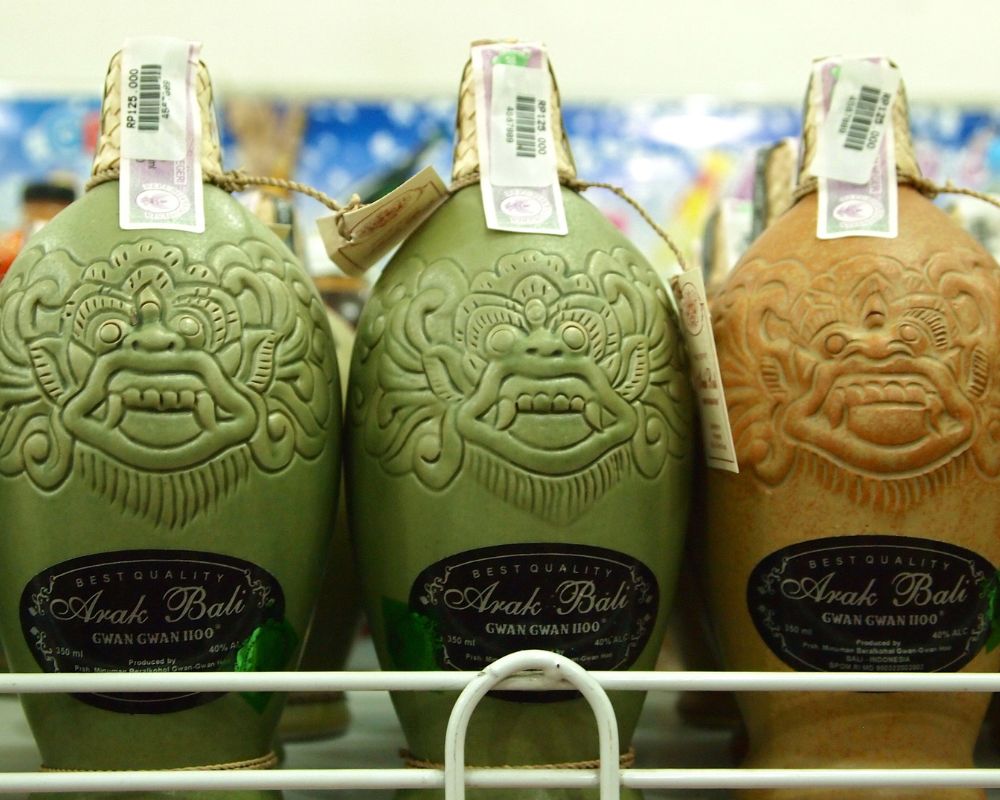
Unless you buy a methanol testing kit and test every bag, you can’t. Also, kits cost about $12 each (one kit per bag), much more than Arak. For that price, you might as well drink something better.
In the local news, every once in a while, you can read about groups of two to five Balinese people who died from Arak. As much as I hate to guess, I think it’s safe to say that these guys got a bad batch. Also, we should be glad that these batches don’t get to the south of the island very often, especially regarding the tourist market.
One place that doesn’t follow this rule is Lombok. In the past few years, most of the people who have been poisoned by methanol have been from Lombok, not Bali.
Without getting too religious, it’s important to note that most Lombok people are devout Muslims. It’s not part of their society to drink or make alcohol like it is for the Balinese.
Methanol makes it to the last steps of making Arak because the people who make Arak in Lombok don’t have as much experience (or knowledge).
Here’s a comparison guide on how to know the difference between good and bad arak:
| Good Arak | Bad Arak | |
| Source and Reputation | usually sourced from reputable producers or distilleries known for their quality and adherence to safety standards. These producers often have a history and positive reviews. | might come from unknown or dubious sources, lacking transparency about their production methods. |
| Appearance | Should be clear and free from any sediment or unusual particles. Any cloudiness or impurities might indicate poor distillation or contamination. | may appear cloudy or have floating particles, which could be signs of improper distillation or storage. |
| Aroma | has a clean, distinct smell that can vary from fruity to slightly floral, depending on the ingredients and fermentation process. The aroma should be pleasant and inviting. | often has a sharp, chemical smell, indicative of contaminants or the presence of dangerous substances like methanol. |
| Taste | tastes smooth with a balanced flavor profile that might include nuances from the fermentation and distillation processes. It should not taste overly harsh or have a chemical aftertaste. | can taste unpleasantly harsh, metallic, or like it contains additives, signaling poor quality or unsafe production practices. |
| Labeling and Packaging | usually comes with proper labeling that includes information about the producer, alcohol content, and sometimes the production batch. This transparency is a sign of a legitimate and conscientious producer. | might lack proper labeling, making it difficult to ascertain its origin, alcohol content, and safety standards. |
| Aftereffects | should not cause adverse effects beyond the usual expectations from alcohol consumption, provided it’s consumed in moderation. | may lead to unusually severe hangovers, nausea, or more serious health issues, indicating the presence of harmful substances like methanol. |
When trying Arak, especially in regions where homemade spirits are common, it’s essential to prioritize safety and quality. Opting for well-reviewed and respected sources, and starting with small quantities, can help mitigate risks associated with consuming poorly made Arak.
Need more information about Bali travel?

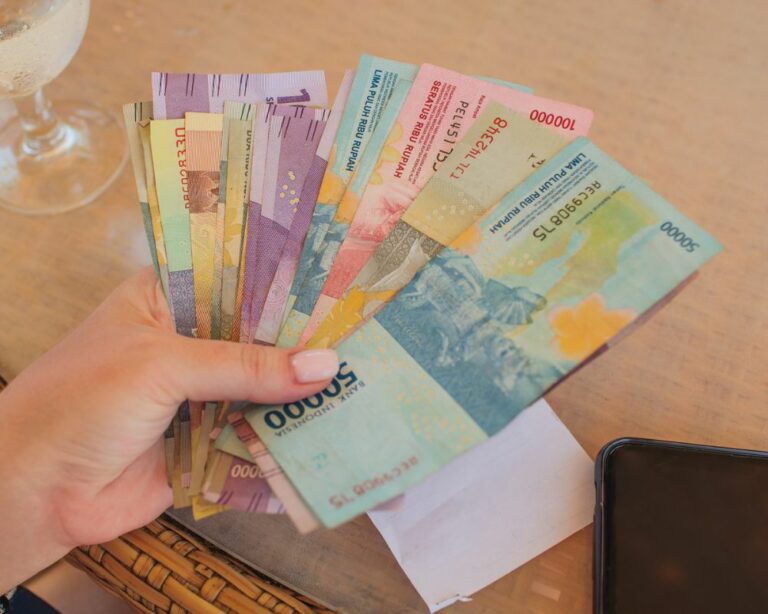
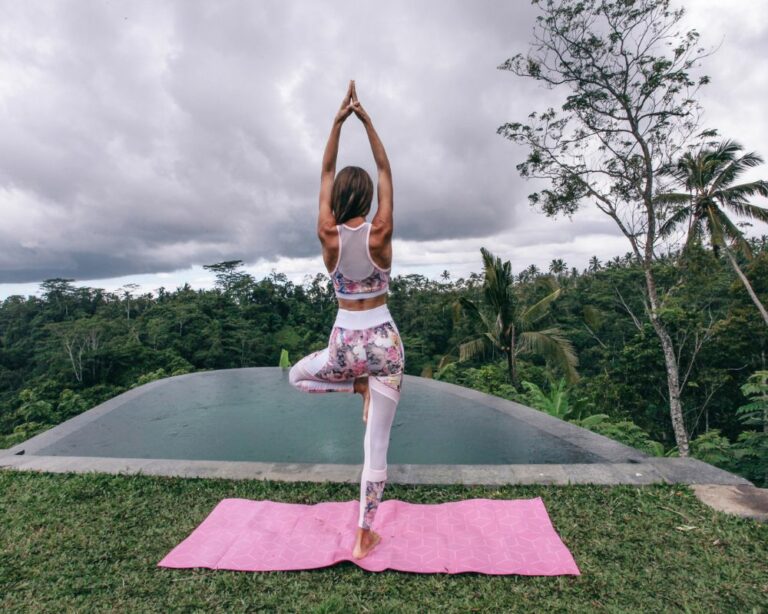
![Editor’s Pick: 7 best hostels in Uluwatu Bali [from $13 per night]](https://www.indonesiainsider.co/wp-content/uploads/Bali-Bobo-best-hostel-in-Uluwatu-for-solo-female-travelers-768x614.jpg)
